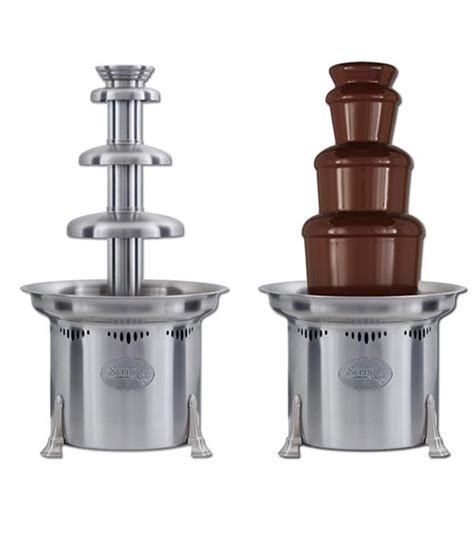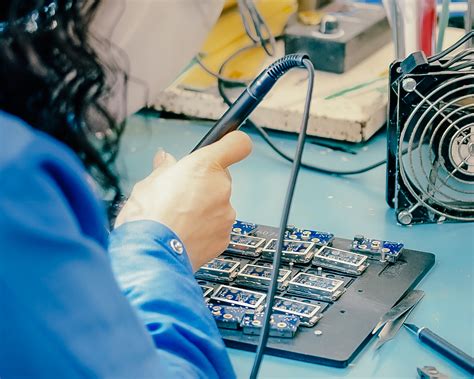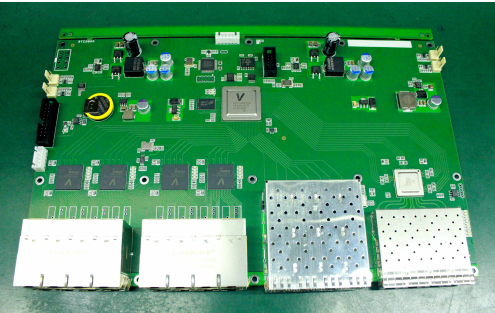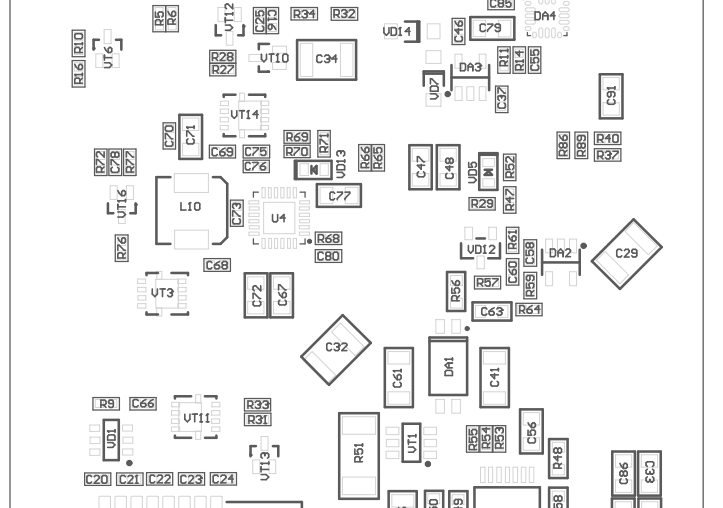Unlocking Innovation: The Art of Bare Printed Circuit Board Manufacturing
Key Takeaways
In your journey through bare printed circuit board manufacturing, it is essential to grasp the intricate relationship between innovation and quality. Understanding the landscape of pcb manufacturing lays the foundation for successfully navigating this field. When you consider the various pcb manufacturing companies, you will notice that each brings unique methods and technologies to the table, which can significantly impact your pcb manufacturing cost. Focusing on innovative techniques not only enhances product reliability but also accelerates production timelines, making it easier for you to meet market demands.
Moreover, engaging with professionals in the pcb manufacturing business allows you to explore design considerations that promote performance and functionality in your end products. By staying informed about emerging trends and utilizing advanced materials effectively, you can position yourself to create efficient and high-quality solutions that resonate with consumers’ needs. In essence, a solid grasp of these key takeaways will empower you to thrive in the competitive world of bare printed circuit board manufacturing.
Unlocking Innovation: The Art of Bare Printed Circuit Board Manufacturing
In the realm of electronics, pcb manufacturing stands as a cornerstone of innovation and functionality. As you explore the intricate process of bare printed circuit board manufacturing, you may discover that selecting the right pcb manufacturing companies can significantly impact your projects. The choice of materials and techniques is vital—materials that offer durability and performance are essential for ensuring the reliability of your designs. Whether you are venturing into prototyping or full-scale production, understanding pcb manufacturing cost can help you budget effectively while aiming for high-quality results. By navigating the complexities of the pcb manufacturing business, you position yourself to unlock new possibilities in product development. Additionally, keeping abreast of innovative techniques in this field allows you to implement solutions that enhance efficiency without compromising quality. This dual focus on quality and efficiency is crucial as it supports your goal to stay competitive in an ever-evolving market. For more insights into pioneering techniques and reliable resources, consider visiting Andwin PCB to enhance your understanding further.
The Evolution of Bare PCB Manufacturing Techniques
The journey of bare printed circuit board (PCB) manufacturing has significantly transformed over the years, driven by the need for enhanced performance and reliability in electronic devices. In the early stages, pcb manufacturing was a manual process reliant on rudimentary techniques that often compromised efficiency. With technological advancements, however, automation and precision engineering have become integral to modern pcb manufacturing companies. Today, the incorporation of state-of-the-art machinery and software aids in producing complex designs that were once deemed impossible.
Moreover, understanding how to streamline your pcb manufacturing business can lead to considerable savings on production costs. Techniques such as multi-layer PCB designs and advanced soldering methods are now commonplace, offering increased circuit density while maintaining functionality. Additionally, as you delve deeper into pcb manufacturing cost, consider how materials selection plays a crucial role; opting for high-quality substrates can greatly enhance the board’s overall performance and longevity.
“Embrace innovation in your approach to PCB design and production; it can make all the difference in adapting to industry demands.”
The evolution of these innovative methodologies not only helps meet consumer expectations but also positions your business at the forefront of technological development in a competitive landscape.
Materials That Matter: Choosing the Right Substrates for Bare PCBs
When embarking on your journey through pcb manufacturing, one of the most critical factors to consider is the choice of substrates. The substrates you select will significantly influence the performance, cost, and durability of your printed circuit boards. Different pcb manufacturing companies offer a variety of materials that cater to unique application requirements. Common materials include FR4, a glass-reinforced epoxy laminate, which is widely used due to its excellent electrical properties and balance between performance and affordability.
In the table below, you can see a comparison of popular substrates and their key characteristics:
| Substrate Material | Dielectric Constant | Loss Tangent | Thermal Conductivity | Cost Factors |
|---|---|---|---|---|
| FR4 | 4.5 | 0.02 | Moderate | Low |
| Rogers (RT/Duroid) | 2.2-3.0 | 0.001-0.005 | High | High |
| Polyimide | 3.0 | 0.01 | Moderate to High | Moderate |
| PTFE (Teflon) | 2.1 | 0.0002 | Very High | Very High |
In making your selection, it’s essential to consider both the pcb manufacturing cost and the specific requirements of your project, such as heat resistance or signal integrity needs. For instance, if you are developing high-frequency applications, materials like Rogers or PTFE might be essential due to their superior electrical properties. Alternatively, for general-purpose applications where budget constraints are more significant, FR4 could be a highly appropriate choice. Ultimately, choosing the right substrate aligns closely with your goals in managing your pcb manufacturing business, ensuring that you balance performance and cost-effectiveness in every product you produce.
Design Considerations for High-Performance Bare Printed Circuit Boards
When embarking on pcb manufacturing, several key considerations ensure optimal performance and reliability in your products. One critical aspect involves understanding the design rules specific to high-performance bare printed circuit boards. This begins with choosing the right materials; substrate selection can drastically affect thermal, electrical, and mechanical properties. You should also evaluate the pcb manufacturing cost, which can fluctuate based on material quality and design complexity.
Layer stacking is another crucial design consideration. When designing your PCBs, be mindful that layer counts can impact signal integrity and electromagnetic interference, especially in high-speed applications. Additionally, designing for manufacturability ensures that your layout aligns with the capabilities of pcb manufacturing companies, allowing for efficient production processes.
Proper placement of components and routing paths is essential to minimize signal loss and maintain impedance control. Techniques such as controlled impedance routing or utilizing blind/buried vias may also be necessary, depending on your performance requirements. By focusing on these aspects during the design phase, you’ll set a solid foundation for your pcb manufacturing business, ultimately leading to enhanced product performance and reliability in the competitive electronics market.
Innovative Techniques in Bare PCB Prototyping and Production
The landscape of bare printed circuit board (PCB) manufacturing is continuously evolving, driven by the need for more efficient, reliable, and innovative solutions. In your journey through PCB manufacturing, it is crucial to embrace cutting-edge techniques that enhance both prototyping and production processes. One such technique is the implementation of advanced automation in the assembly process. By integrating robotics and machine learning, you can significantly reduce human error, streamline workflows, and cut down on pcb manufacturing costs.
Moreover, additive manufacturing technologies are making waves in the industry. They allow for rapid prototyping of complex designs that were previously difficult or impossible to achieve with traditional methods. With the use of 3D printing techniques for creating substrates or even entire PCB configurations, you can quickly iterate designs while maintaining high quality standards expected from prominent pcb manufacturing companies.
Additionally, embracing materials that exhibit superior electrical performance can elevate your pcb manufacturing business to new heights. Materials like polyimide and Rogers substrates are increasingly popular due to their thermal stability and dielectric properties. These materials not only improve the functionality but also broaden your design possibilities.
Lastly, advanced testing methodologies that incorporate data analytics can help you ensure the integrity and reliability of your products throughout their lifecycle. By employing these innovative techniques during prototyping and production phases, you enhance your competitiveness in the market while ensuring that your products meet rising consumer standards for performance and reliability. This comprehensive approach ultimately positions you as a leader in the ever-evolving field of bare PCB manufacturing.
Quality Assurance in Bare Printed Circuit Board Manufacturing
In the realm of pcb manufacturing, ensuring the highest standards of quality is paramount. Quality assurance in bare printed circuit board manufacturing encompasses a series of meticulously designed processes that guarantee functionality and reliability in your printed circuit boards. From the initial design phase to the final production, every step requires thorough inspection and testing. You should be aware that leading pcb manufacturing companies employ a range of testing methods, such as Automated Optical Inspection (AOI) and electrical testing, to identify defects early in the process. This proactive approach helps maintain the integrity of your designs and minimizes the risk of costly failures down the line.
It’s essential to consider that pcb manufacturing cost can be significantly impacted by quality assurance practices. While investing in high-quality materials and rigorous testing may seem like an additional expense, these practices ultimately lead to greater efficiency and product longevity, which can enhance your pcb manufacturing business reputation in a competitive market. Implementing robust quality assurance protocols not only fosters trust among your clients but also establishes a system for continuous improvement—a critical factor as technology evolves. By maintaining strict quality standards, you ensure that every bare PCB produced meets both your specifications and industry regulations, enhancing both performance and customer satisfaction over time.
The Future of Bare Printed Circuit Boards: Trends and Predictions
As you delve into the future of bare printed circuit board manufacturing, it becomes clear that innovation remains at the forefront of the industry. With rapid advancements in technology, pcb manufacturing companies are increasingly adopting smart technologies and automation, which drive efficiency while reducing pcb manufacturing costs. One prevailing trend is the integration of IoT (Internet of Things) capabilities into PCB designs, enabling devices to communicate and share data more effectively. This evolution facilitates enhanced performance and opens the door to new applications, particularly in sectors such as automotive and healthcare. Furthermore, sustainability is becoming a cornerstone; many businesses are now focused on eco-friendly materials and processes, catering to an environmentally conscious market. The evolution towards smaller and more complex board designs is expected to intensify as manufacturers seek to meet the demands for lightweight and compact electronics. As your pcb manufacturing business adapts to these trends, embracing flexible production techniques will be essential for maintaining a competitive edge in this rapidly evolving landscape.
Cost-Effective Strategies for Efficient PCB Production
In the pcb manufacturing realm, understanding the balance between quality and cost is essential for success. You’ll find that many pcb manufacturing companies are increasingly adopting innovative strategies to streamline their production processes without compromising reliability. One effective approach involves investing in state-of-the-art technology that enhances both efficiency and accuracy, ultimately leading to reduced pcb manufacturing cost. Additionally, implementing lean manufacturing principles can help minimize waste and optimize resources, allowing your pcb manufacturing business to deliver high-quality products at competitive prices. Furthermore, collaborating with suppliers for bulk purchasing of materials can also contribute significantly to driving down costs. Remember that maintaining close communication with your design teams can lead to more efficient layouts that not only speed up production but also reduce material costs. By embracing these cost-effective strategies, you can ensure your pcb manufacturing process is both economically viable and capable of meeting the evolving demands of the electronics market.
Conclusion
In the evolving landscape of pcb manufacturing, embracing innovative techniques and advanced materials is critical for maintaining a competitive edge. As you delve deeper into the pcb manufacturing process, it’s essential to understand how various facets, including substrate selection and design considerations, can significantly impact the overall quality of your products. By adopting efficient practices, you can not only lower your pcb manufacturing cost but also enhance the reliability and performance of your bare printed circuit boards. Engage with reputable pcb manufacturing companies that prioritize quality assurance and precision, enabling your pcb manufacturing business to thrive in a landscape characterized by rapid technological advancements. Ultimately, the commitment to continuous improvement and adaptation will define the success of your endeavors in this specialized field.
FAQs
What are the main processes involved in pcb manufacturing?
The main processes in pcb manufacturing typically include designing the circuit, etching the board, plating, and finally testing the board for functionality and reliability. Each step ensures the pcb manufacturing cost is minimized while maintaining high-quality standards.
How can I choose the right pcb manufacturing companies?
When selecting pcb manufacturing companies, consider factors such as their experience, production capabilities, customer reviews, and their ability to meet your specific design requirements. It’s also crucial to verify that they use advanced technologies to ensure product quality.
What influences pcb manufacturing cost?
Numerous factors affect pcb manufacturing cost, including the size of the board, complexity of the design, type of materials used, and production volume. Larger orders often reduce costs per unit due to economies of scale.
How can I effectively start a pcb manufacturing business?
To start a successful pcb manufacturing business, you should conduct thorough market research to understand customer needs, ensure you have the right technology and tools for production, create a solid business plan that outlines your goals and financial projections, and establish relationships with reliable suppliers for materials.
For additional insights into pcb manufacturing, including innovative techniques and industry trends, please visit this link.







